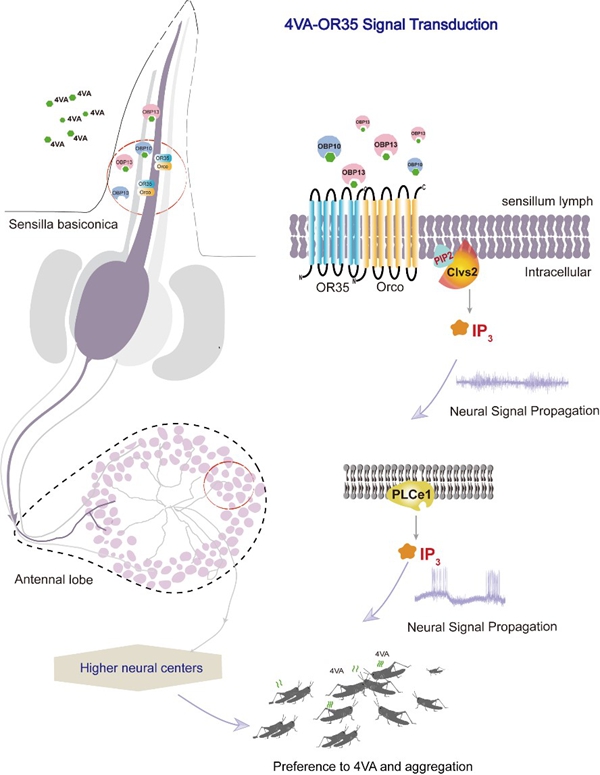Animals depend on their sense of smell to locate food, identify mates and evade danger. In mammals, olfactory perception typically relies on G protein-coupled receptor (GPCR) pathways. Insects, by contrast, use a distinct receptor system made up of odorant receptors (OrX) paired with a co-receptor known as Orco. For years, a key question has lingered: Do these insect receptors signal through GPCR-like routes or an entirely different mechanism?
To tackle this issue, a research team led by Prof. KANG Le from the Institute of Zoology of the Chinese Academy of Sciences (CAS), who is also a CAS member, has discovered that locusts bypass the classical GPCR pathway entirely. Instead, they rely on inositol 1,4,5-trisphosphate (IP3)-a specific molecule-as the core second messenger in their olfactory signal transduction process.
Their findings, published in Science Advances on Sept. 10, map the complete pathway linking odor detection to behavioral responses in locusts.
To unravel this mechanism, the researchers used 4-vinylanisole (4VA) as a model. They discovered that the signal begins when two odorant-binding proteins, OBP10 and OBP13, capture the 4VA pheromone and deliver it to the olfactory receptor OR35 together with Orco co-receptor. Rather than activating GPCRs, the OR35-Orco receptor complex engages a lipid-binding protein, Clvs2, which facilitates the enrichment of PIP2 lipids in cell membranes. This step triggers the production of IP3, which generates electrical signals in the antenna and is amplified in the brain's antennal lobe by the enzyme PLCe1. The cascade ultimately drives the locust's behavioral response.
Notably, the IP3 pathway is not limited to pheromone sensing. Tests with plant volatiles, alarm pheromones, and sex pheromones revealed the same mechanism, suggesting that IP3 serves as a universal second messenger in locust olfaction.
These findings establish a molecular chain: OBPs → OR35/Orco → Clvs2 → PLCe1 → IP3. This discovery reshapes scientific understanding of how insects process chemical signals, the researchers noted. Additionally, the study provides a new conceptual basis for developing eco-friendly strategies to control locust populations.

A complete olfactory transduction pathway in locusts. (Image by Prof. KANG Le's Lab)






